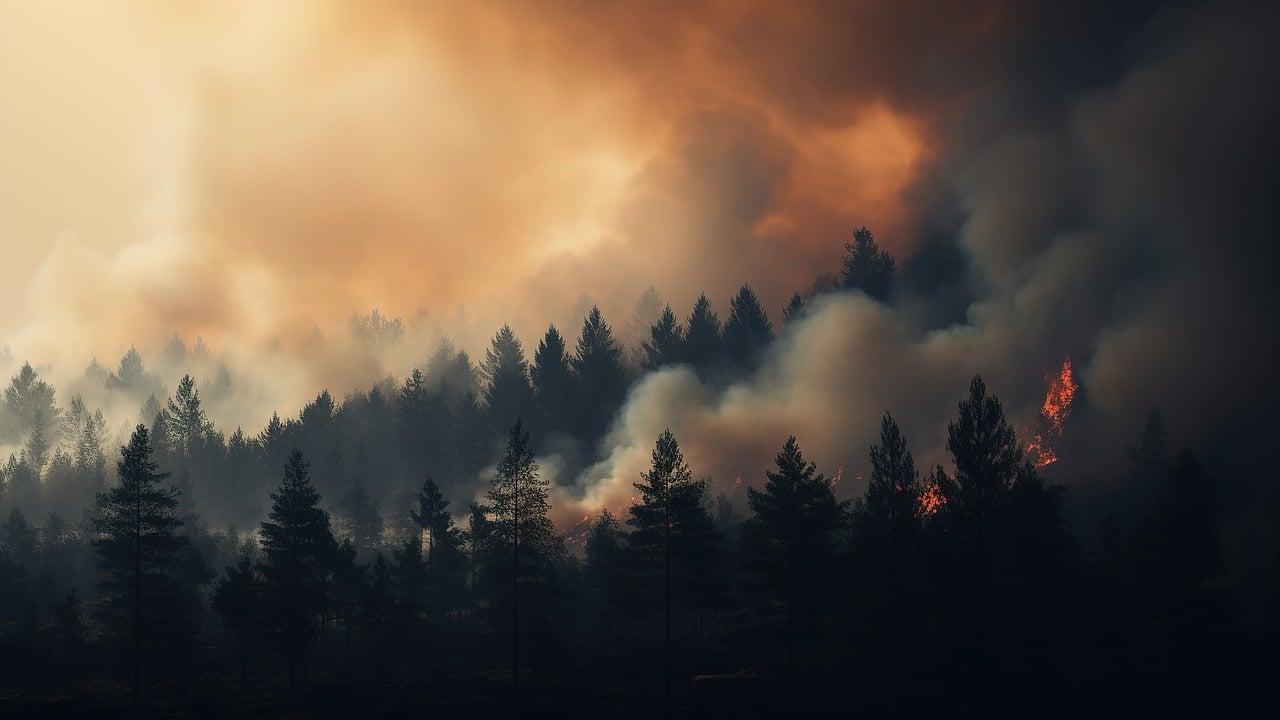Wildfires have once again cut through Los Angeles, leaving destruction and question marks all over. These repetitive incidents have raised fundamental questions about what fuels such deadly fires. While wildfires have long been part of Southern California’s landscape, the current conditions reflect a distressing interplay between environmental, climatic, and human influences. Herein, we explore the key reasons lying behind these fires and their escalating frequency.

1. Severe Drought
Southern California has been experiencing extreme drought conditions for some time now, worse than it was in previous years. With very little rain for months on end, vegetation is extremely dry and highly susceptible to ignition. Vegetation and shrubs are like fuels that make the atmosphere highly flammable.

2. Impact of Santa Ana Winds
The infamous Santa Ana winds greatly enhance the wildfire danger. These hot, dry winds sweep down from inland desert areas, gaining speed as they funnel through mountain ranges and canyons. Sometimes these winds reach incredible speeds, sending embers flying over large distances and rapidly spreading fires.
3. Climate Change As An Amplifier
Climate change has unmistakably played a role in amplifying the risks of wildfires. Rising global temperatures contribute to drier soils and vegetation, while erratic weather patterns disrupt traditional rainfall cycles. Besides, extended periods of heat lengthen the wildfire season, leaving Los Angeles at risk for much of the year.
4. Growth Of The Urban Environment
As the population increases in Los Angeles, developments are structurally encroaching into fire-prone areas. This is known as the wildland-urban interface and creates two increases: one in the potential for fire to break out and another in property damages. The proximity of nature to residential zones makes fire management increasingly effective.
5. Flammable Vegetation Types
Certain species of plants that are native to Southern California, like eucalyptus trees, are very susceptible to fire. Being imported due to their rapid growth rates, these types of trees have leaves and bark full of oils that ignite easily and burn hot. Their location within residential areas has raised concern among environmentalists and city planners alike.

Steps to prevention and mitigation
The wildfires that have repeatedly hit Los Angeles strongly indicate the need for prevention and pre-emptive measures. Short-term strategies include controlled burns, improved emergency response systems, and revised building codes in high-risk areas-all of which would lessen the immediate risk. However, longer-term solutions are called for, including mitigation of climate change and a revision in urban development policies.
These incidents underscore how human development and care for the environment are poised on a knife’s edge as Los Angeles gears up for another fire season. It is not only nature that plays a role in the wildfires but also human decisions and actions. By understanding these factors and committing to meaningful change, one will be able to reduce the frequency and intensity of any future fires.
Impact of fires in USA
Southern California is preparing for “extremely critical fire conditions” as a new period of Santa Ana winds today through tomorrow will sweep across parts of Los Angeles and Ventura counties as the battle to contain the raging blazes goes on.
The fires have killed at least 25 people and swept through 40,000 acres in the Greater Los Angeles area, destroying more than 12,300 structures. Firefighters are still working to contain the blazes. See maps of the fire areas and evacuation zones.
The causes are not yet known, but investigators are homing in on one scorched slope in a bid to discover where the largest blaze, the Palisades Fire, started.
Los Angeles County declared a state of public health emergency warning that smoke and particulate matter can create immediate as well as long-term hazards. Full warning and list of recommendations here.
Conclusion
The causes of the recent fires in Los Angeles reflect a complex combination of natural and human-made influences. This is a crisis that will be resolved with all levels of action being taken locally, statewide, and globally. With the recovery processes well underway, it is now time to take steps and stop the next disastrous blaze.










